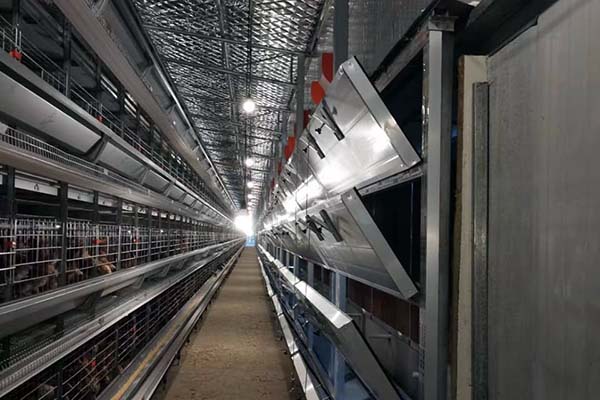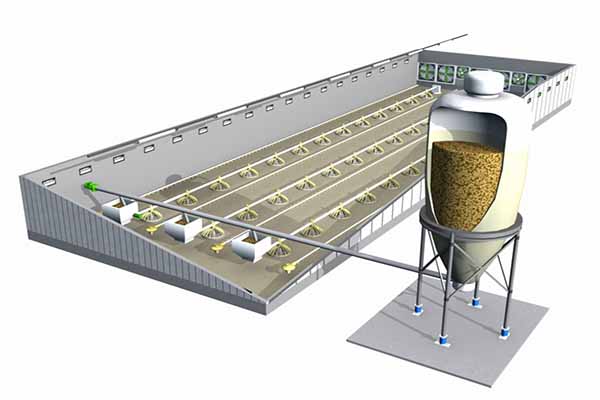Precautions for Installing Chicken Equipment in Uganda
Time : 2025-06-25
Installing chicken equipment in Uganda requires careful planning and attention to detail to ensure the health and productivity of the poultry. As the demand for poultry farming grows in the region, it is essential for farmers and installers to follow proper precautions to create an optimal environment for the chickens. This article provides a comprehensive guide on the precautions to consider when installing chicken equipment in Uganda.

Site Selection and Preparation
The first step in installing chicken equipment is to select an appropriate site. Here are some key considerations:
- Accessibility: The site should be easily accessible for regular visits by farmers and for delivery of equipment and feed.
- Water Source: A reliable water source is crucial for drinking and sanitation. It should be close to the chicken house to minimize the distance water has to travel.
- Soil Condition: The soil should be fertile and well-drained to ensure the chickens have a healthy living environment.
- Proximity to Other Livestock: Keeping chickens away from other livestock reduces the risk of disease transmission.
Once the site is chosen, the following preparation steps should be taken:
- Clearing: Remove all debris, rocks, and other obstructions from the site.
- Drainage: Ensure proper drainage to prevent flooding and standing water, which can lead to diseases.
- Grading: Level the ground to create a flat surface for the chicken house.
Designing the Chicken House
The design of the chicken house is crucial for the well-being of the chickens. Here are some design considerations:
- Size and Layout: The house should be large enough to accommodate the number of chickens and allow for proper movement. The layout should be efficient and easy to manage.
- Insulation: Proper insulation helps regulate the temperature and can reduce energy costs.
- Ventilation: Good ventilation is essential for air quality and to prevent respiratory diseases.
- Lighting: Provide sufficient natural light during the day and artificial light during the night to mimic the natural cycle.
- Roosts and Nesting Boxes: Ensure there are enough roosts and nesting boxes for all chickens, as overcrowding can lead to stress and health issues.
Choosing the Right Equipment
Selecting the right equipment is vital for the success of the poultry operation. Here are some equipment considerations:
- Feeder and Waterers: Choose feeders and waterers that are appropriate for the size and type of chickens. Ensure they are easy to clean and resistant to corrosion.
- Heating and Cooling Systems: If the chickens are kept in an enclosed space, a heating and cooling system may be necessary, especially in extreme weather conditions.
- Manure Management: Consider a system for collecting and managing manure to maintain a clean environment and prevent the spread of disease.
- Security: Install secure locks and deterrents to protect the chickens from predators.
- Professional Installation: Hire a professional installer with experience in poultry equipment to ensure proper installation.
- Quality Control: Inspect all equipment before installation to ensure it is in good working condition.
- Safety Precautions: Use appropriate safety gear during installation to prevent accidents.
- Cleaning: Clean feeders, waterers, and other equipment regularly to prevent disease and contamination.
- Repair and Replacement: Address any issues with equipment promptly to avoid further damage or downtime.
- Inspection: Conduct regular inspections of the chicken house and equipment to identify potential problems early.
</u l>
l>
Installation and Maintenance
During the installation process, the following precautions should be taken:
Regular maintenance is essential to keep the equipment in good working order. Here are some maintenance tips:

Regulatory Compliance
It is important to comply with local regulations and guidelines when installing chicken equipment in Uganda. This includes obtaining necessary permits and adhering to health and safety standards.
Conclusion
Installing chicken equipment in Uganda requires careful planning and attention to detail. By following these precautions, farmers and installers can create a healthy and productive environment for their chickens. Proper installation, maintenance, and compliance with regulations are key to the success of any poultry operation.











